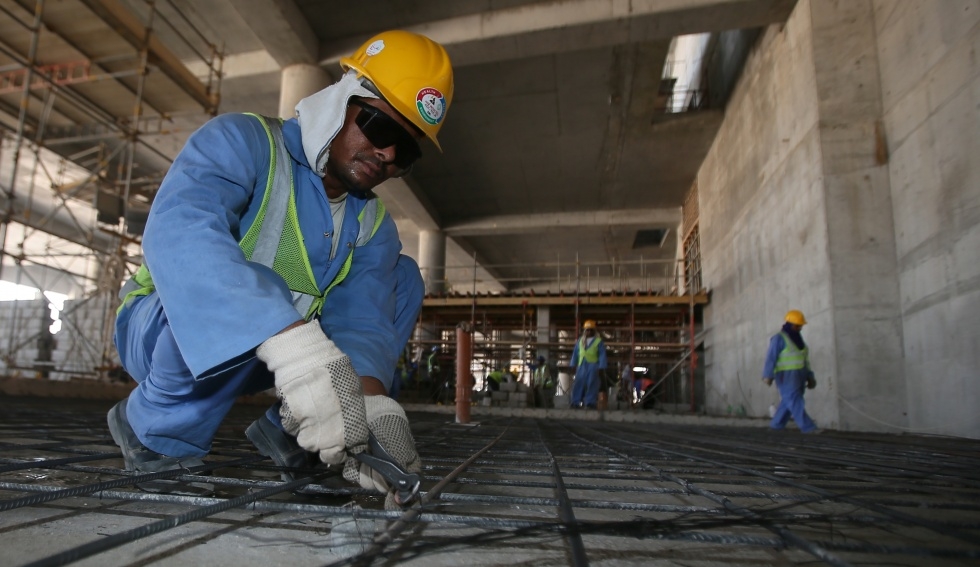Hundreds of migrant workers forcibly evicted in Qatar

Hundreds of expats in the central Musheireb area of Doha are now living homeless, after they were ejected from their homes on Tuesday night, local media reported.
According to news website Doha News, the expats were thrown out of their homes by the Internal Security Forces (ISF) at around 9:30pm local time on Tuesday, in a process that took two hours.
The homes are scheduled for demolition and are expected to be replaced with more upscale developments.
Regional daily, Gulf News has also reported that in the neighbouring al-Asmakh district anywhere between 500 and 1,000 people have also been evicted from their homes.
MD Faiyaz, a Nepalese worker who was among those evicted, told Doha News that the expat residents had received no prior warning about the eviction.
“I was at al-Sadd [district of Doha] and got a phone call saying that the police were at our apartment,” he said.
“They were breaking down doors, hitting people and throwing them out of the houses.”
Two months ago, several residential buildings in the area reportedly had their electricity shut off, while notices were given that some buildings would be evicted.
But to many, the eviction appears to have come as a surprise.
The eviction provoked outrage on Twitter with some pointing out the irony of such an act taking place during the holy month of Ramadan:
There is additional concern for the well fare of the newly-evicted migrant workers as Qatar bans the public display of eating or drinking during the holy month - a restriction which is hitting the homeless particularly hard.
Due to Doha’s rising rental rates, the evicted - who are made up of low income Nepalese, Bangladeshis, Indians, Sri Lankans and Pakistanis - have had difficulty finding any other living space, local media said. Many of the workers have been spotted sleeping on the streets, while other have tried to regain access to their old rooms, although most have been prevented from doing so by police.
Nick McGeehan, Middle East researcher for Human Rights Watch, says the future looks bleak for the evicted.
“We’ve met workers before who are living illegally there and what they tend to do is club together and get themselves squalid cheap, cramped housing, often in the middle of Doha and it’s horrendous, really appalling stuff,” he told Middle East Eye.
“I don’t know what you would do with a hundred people - there would be no support for them whatsoever, they’ll be completely abandoned.”
Foreign workers make up the vast majority of Qatar’s population of over two million people.
A report released by the International Trades Union Congress stated that Qatar had among the worst labour rights legislation in the world, with only failed states and conflict zones faring worse, citing laws restricting the right to form trade unions and the Kafala sponsorship system as reasons for the country’s poor rating.
“They’re under massive pressure,” said McGeehan.
“The problem is that there is currently a split in the political leadership in Qatar on how to deal with this problem. There are people who believe they should move forward and put in place the reforms that they need and that lobby’s good intentions are being obstructed by another lobby, which is conservative and doesn’t want to make any reforms and thinks that the world will collapse if Qatari employers loosen the grip on their foreign workers.”
He told Middle East Eye that the controversy around workers on the World Cup stadium - where it was reported that thousands of workers could die due to poor conditions - and other media exposure has put a lot of pressure on the Qataris to reform.
“There have been a few vaguely articulated reforms, which have changed some of the mechanisms that are responsible for the abuses, but not what we needed, nowhere near what we needed,” McGeehan added.
Middle East Eye propose une couverture et une analyse indépendantes et incomparables du Moyen-Orient, de l’Afrique du Nord et d’autres régions du monde. Pour en savoir plus sur la reprise de ce contenu et les frais qui s’appliquent, veuillez remplir ce formulaire [en anglais]. Pour en savoir plus sur MEE, cliquez ici [en anglais].

